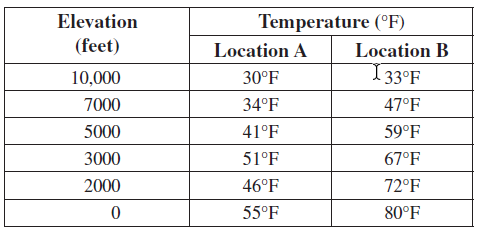A parcel of air with an initial temperature of 55°F begins to rise in Location A. The LCL of the parcel is 2000 feet. With a red (or labeled) line, carefully draw the temperature decrease of this parcel of air as it rises to 8000 feet. Be sure to consider the LCL, and the DAR and SAR.


(a) Describe the stability pattern of this parcel of air.
(b) What is the general name for the change observed in the vertical temperature profile between 2000 and 3000 feet?
(c) Does the parcel of rising air become highly stable or highly unstable between 2000 and 3000 feet? Why?
(a) Rising air is stable from surface to 8000 feet.
(b) Temperature inversion.
(c) Highly stable–parcel is much colder than the surrounding air.
You might also like to view...
The West Bank and Gaza Strip are called the "Occupied Territories" because they are
A) parts of Israel occupied by Palestinians. B) parts of Israel under attack by Palestinians. C) controlled by the British as part of the British Mandate. D) remnants of Palestine occupied by Israel. E) both parts of Israel occupied by Palestinians and under attack by Palestinians.
Discuss the problems that animals had to overcome to adapt to the land environment. How did they overcome these
problems? Provide specific examples of these adaptations. What will be an ideal response?
The difference between speed and velocity is that velocity additionally incorporates:
A) time. B) distance. C) mass. D) direction.
The main message from Figure 14.9.1 is that
A) waste per capita has increased and finally decreased a little starting in 1995. B) the gap between waste per capita and recycling rate has decreased over time. C) in 1960, the U.S. started quantifying the level of recycling. D) the rate of increase of recycling has leveled off in recent years. E) waste per capita and recycling rate follow each other very closely year to year.